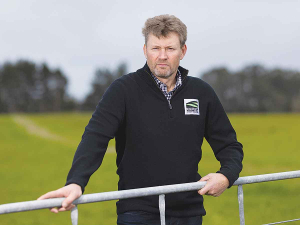International dairy commodity prices have staged a remarkable recovery in recent months, as global supply and demand slowly return to a more balanced outlook.
In a familiar pattern, sentiment has raced ahead of the fundamentals, with price increases occurring earlier and more rapidly than expected.
With this in mind, caution is advisable, as current pricing remains vulnerable to reverses in sentiment until the fundamentals catch up.
Nonetheless, the oversupply issue that has maintained downward pressure on commodity pricing for so long looks to be receding, as New Zealand, Australia, and, increasingly, Europe are seeing milk production track below year-ago levels.
Demand is presenting a mixed picture, with China returning to growth, while other markets are more sluggish.
Buyers have been more actively seeking product as prices rise, but resistance to further increases is building.
In Australia, the 2016-17 milk production season has begun with two months of significant year-on-year declines (averaging 9%) in milk intakes.
Whilst enormous variation exists between regions and processors, margins are tight or negative for most farmers, and combined with the ongoing impacts of the 2015-16 price step-down, are likely to keep production constrained through 2016-17.
The milk volume impact is expected to moderate as the season progresses and the benefits of higher rainfall and lower costs accrue, equating to a 5% fall over the full season.
Weather conditions are providing some relief, though rainfall has exceeded useful levels in many regions, and is impacting farm operations, fodder conservation, and causing damage via flooding.
The Australian domestic market remains characteristically steady, albeit with notable changes in key categories.
While total milk sales volumes have grown moderately (increasing by 1.5% to 1,358 million litres over the 12 months to September), fresh white full cream milk sales have increased their share, up 7% in volume and 9% by value. This reflects an ongoing shift by consumers away from modified (reduced fat) milk varieties, which fell 6.7% in volume and value.
Full cream now accounts for 61% of the fresh white milk category, up from 54% only three years ago.
As widely reported in this column and elsewhere, branded milk has regained market share from supermarkets’ private label fresh white milk category, with branded milk sales volumes increasing by 7%, while private label fell by nearly 2%.
The apparent reversal of the long term trend of increased private label share stems from consumer responses to the media coverage of the 2015-16 milk price step-downs.
Cheese volumes have grown steadily over the last 12 months to April 2016, increasing by 2.2%, while cheese values have grown by 1%. Growth in sales of deli cheese have outstripped those of chilled cheese, increasing 5.6% in volume and 3.8% in value. This is a continuation of a trend observed over the past five years, where deli cheese growth has repeatedly outpaced that of chilled cheese.
Growth in butter sales has slowed, but remains notable at 3.6% in volume and 3.8% in value.
As part of -- and despite -- a tumultuous few months, various things have happened in the corporate sector.
Fonterra will spend another $4.3 million in its Wynyard (Tasmania) cheese plant, streamlining its warehousing operations, and it will sell its Wagga, NSW, Riverina Fresh milk business.
Midfield Group’s new powder dryer at Penola, South Australia continues to take shape, and the group has an agreement with Louis Dreyfus for it to market the finished product in the US, Middle East and southern Asia.
Camperdown Dairy International is shelving its planned $500 million vertically integrated milk powder operation, and Murray Goulburn has reiterated plans to build a new nutritionals plant, originally flagged for Koroit, Victoria.
As the returns from international markets recover, an active processing sector will once again be seeking extra milk to capitalise on renewed export opportunities.
The capacity and inclination of processors to pass market upside through in the form of higher farmgate prices to offset this will also be influenced by the inherent risks in a largely sentiment-driven recovery.
The market is in a much better place than this time in 2015, but downside risks remain and nobody wants a repeat of late 2015-16.
• John Droppert is an analyst with Dairy Australia.











